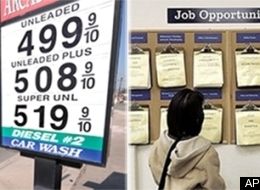UPDATED SUNDAY - JUNE 8, 2008
********************************************
An HBE IWB Holster for 1911's
By Stephen Camp
It's probably a pretty safe bet that the longer pistoleros have been involved with "the addiction", the larger their holster collection grows. In my case, the number of holsters may very well exceed the number of handguns I actually own and many find their way into "the box," a final resting place for holsters that just don't "work" for me.
Just as many of us continue to search for "the perfect handgun", something that I'm becoming more and more sure doesn't exist, our interest is piqued when we see what might be a "perfect holster". We think about it and often as not, buy one. Sometimes we achieve nirvana and sometimes we have to add a new member to "the box".
In some instances I've had darned good luck with production line holsters such as the old Bianchi Askins Avenger, but generally speaking we still pretty much get what we pay for and sooner or later, a goodly number of us wind up buying a holster from a custom maker. I've had very good luck with custom leather from Lou Alessi, Garrity Holsters, and HBE Leatherworks. Eric Larsen's IWB (Inside-the-Waist-Band) Com 3 holster for the 1911 will be the focus of this post.

Here is the maroon leather holster from Eric Larsen's "HBE Leatherworks". I wore this holster with the SA Mil-Spec 1911-based pistol for several days to see if it actually "works" for me or if it might find its way into "the box." This holster has a 15-degree cant, but other options are available.

The Mil-Spec fit snugly in the HBE Com 3 but after a few days, it loosened only to the point that the pistol could be easily drawn, yet not move about when holstered. The holster did not fade, was not easily scratched and did not fade onto clothing.
The holster's snap-type belt loops made it easy to wear or remove the holster, a need for some folks who lawfully carry concealed and the loops never inadvertently became unsnapped. The distance between the loops worked fine with several pair of pants with regard to their pant loops. This distance also allows the holster to more easily form to the body for greater comfort.
Of prime importance to me was whether or not the holster would move or shift from its original position. This one did not, a good thing indeed.
Clint Smith reportedly said something to the effect that, "Handguns are not meant to be comfortable. They're meant to be comforting". While I agree with that statement in theory, I believe that the reality for most of us is that we'll have our comforting handgun on our person more often if we can do it comfortably.
I found the HBE Com 3 quite comfortable and predict that it will more readily allow my comforting .45 to be present when it might not otherwise be.
The 1911-based autoloader, particularly in .45 ACP, is held in high esteem by a great percentage of defense oriented shooters. At the same time, I doubt that John M. Browning's initial design parameters for his great military sidearm included concealability. It is on the large side and compared to more than a few of today's handgun choices, heavy. That said, this handgun continues to serve its masters well and remains a most popular choice in defensive hardware.
A good belt and holster can go a long way in making this pistol both comfortable to tote and hard to spot, while still being readily accessible. For me, the Com 3 appears to be just such a holster.
Mr. Larsen advises that the holster's back panel is made of 7/8 oz. steer back strap hide for sturdiness. The front is 5/6 or 6/7 oz., depending upon the hide characteristics he is using. He advises that this molds and shapes well without being too thin for long service life. I will also add that the holster is not too thick, a trait important in IWB designs. Stitching is done with polyester thread to resist UV and is resistant to wear and sweat, which is a definite consideration for an IWB holster. Black thread is used because it doesn't fade with time as can thread that has been dyed.

The Com 3 holster fits the pistol snugly and I believe that it is unlikely that the pistol would "launch" during either a foot chase by an officer or any vigorous activity the wearer might be engaged in. At the same time, the weapon is easily drawn. It was no problem for me to get a proper grip on the gun while it was still holstered.

The Com 3 completely contains the muzzle of the pistol. It does not abrade skin, something most will agree is important in a concealment holster intended for daily (and nightly) use.

Here is the Com 3 being worn. It conceals well and made it very easy to conceal the 5" "forty-five automatic" beneath but a loose-fitting shirt. It stayed in place hours upon hours and was as comfortable as any IWB holster I've tried…and better than a great many others…that are now in "the box."
I definitely am not much of an artisan at anything and am certainly not a holster maker. A holster that I'd make would probably resemble a sausage sack than anything else, but I truly believe this to be a holster that will serve both well and long.
Mr. Larsen has suffered some rather severe personal setbacks in the recent past, but things are improved vastly and he advises that he's working hard on catching up previous orders. I asked how long the wait might be now for a Com 3 and he advised 3 to 6 months. He also advised that he would be most happy to take questions. (Depending upon options available to the buyer, cost starts at $89.00, which includes Priority Mail costs. Holsters requested in exotic hides such as alligator will take longer and cost more.)
Contact information as well as information on the Com 3 and other HBE holsters can be had at his site:
http://www.hbeleatherworks.com/
Take a look. I think you might just like what you see.
************************************************************************************************
(Getty Images)
After two years of below-average rainfall and a scourge of wildfires last October, California Governor Arnold Schwarzenegger has declared a statewide drought. This proclamation will allow water officials to ration supplies and to shift water around the state more rapidly in an attempt to curb the situation.
“We must recognize the severity of the crisis that we face,” the Republican governor said Wednesday at a news conference. “For the areas in Northern California that supply most of our water, this March, April and May have been the driest ever in our recorded history.”
California’s six-year drought that ended in 1991 was declared the worst ever at the time. It was followed by heavy rains, massive flooding, and heavy growth of grass, shrubbery and weeds. This heavy undergrowth fueled the flames of dangerous and devastating wildfires later that year.
Now Schwarzenegger is saying that areas of northern California have experienced their driest spring in recorded history.
Whether droughts, wildfires, earthquakes, race riots, or budget deficits, California keeps getting hit by disasters; and these disasters keep getting described as the “worst ever.” Many have wondered and are wondering if the state is under a curse.
California’s current situation vividly illustrates the penalty God said would come upon those who turn away from His law. Only God can prevent such disasters. His words in Amos 4:7 are, “… I caused it to rain upon one city, and caused it not to rain upon another city: one piece was rained upon, and the piece whereupon it rained not withered.” California has been alternating between “worst ever” droughts and massive floods. For more specific information on exactly what California is being punished for, read “Is California Under a Curse?” by Trumpet editor in chief Gerald Flurry. •
...............................................................................................................
Water-Starved California Slows Development
PERRIS, Calif. — As California faces one of its worst droughts in two decades, building projects are being curtailed for the first time under state law by the inability of developers to find long-term water supplies.
Water authorities and other government agencies scattered throughout the state, including here in sprawling Riverside County, east of Los Angeles, have begun denying, delaying or challenging authorization for dozens of housing tracts and other developments under a state law that requires a 20-year water supply as a condition for building.
California officials suggested that the actions were only the beginning, and they worry about the impact on a state that has grown into an economic powerhouse over the last several decades.
The state law was enacted in 2001, but until statewide water shortages, it had not been invoked to hold up projects.
While previous droughts and supply problems have led to severe water cutbacks and rationing, water officials said the outright refusal to sign off on projects over water scarcity had until now been virtually unheard of on a statewide scale.
“Businesses are telling us that they can’t get things done because of water,” Gov. Arnold Schwarzenegger, a Republican, said in a telephone interview.
On Wednesday, Mr. Schwarzenegger declared an official statewide drought, the first such designation since 1991. As the governor was making his drought announcement, the Eastern Municipal Water District in Riverside County — one of the fastest-growing counties in the state in recent years — gave a provisional nod to nine projects that it had held up for months because of water concerns. The approval came with the caveat that the water district could revisit its decision, and only after adjustments had been made to the plans to reduce water demand.
“The statement that we’re making is that this isn’t business as usual,” said Randy A. Record, a water district board member, at the meeting here in Perris.
Shawn Jenkins, a developer who had two projects caught up in the delays, said he was accustomed to piles of paperwork and reams of red tape in getting projects approved. But he was not prepared to have the water district hold up the projects he was planning. He changed the projects’ landscaping, to make it less water dependent, as the board pondered their fate.
“I think this is a warning for everyone,” Mr. Jenkins said.
Also in Riverside County, a superior court judge recently stopped a 1,500-home development project, citing, among others things, a failure to provide substantial evidence of adequate water supply.
In San Luis Obispo County, north of Los Angeles, the City of Pismo Beach was recently denied the right to annex unincorporated land to build a large multipurpose project because, “the city didn’t have enough water to adequately serve the development,” said Paul Hood, the executive officer of the commission that approves the annexations and incorporations of cities.
In agriculturally rich Kern County, north of Los Angeles, at least three developers scrapped plans recently to apply for permits, realizing water was going to be an issue. An official from the county’s planning department said the developers were the first ever in the county to be stymied by water concerns. Large-scale housing developments in Santa Barbara and San Luis Obispo Counties have met a similar fate, officials in those counties said.
Throughout the state, other projects have been suspended or are being revised to accommodate water shortages, and water authorities and cities have increasingly begun to consider holding off on “will-serve” letters — promises to developers to provide water — for new projects.
“The water in our state is not sufficient to add more demand,” said Lester Snow, the director of the California Department of Water Resources. “And that now means that some large development can’t go forward. If we don’t make changes with water, we are going to have a major economic problem in this state.”
The words “crisis” and “water” have gone together in this state since the 49ers traded flecks of gold for food. But several factors have combined to make the current water crisis more acute than those of recent years.
An eight-year drought in the Colorado River basin has greatly impinged on water supply to Southern California. Of the roughly 1.25 million acre-feet of water that the region normally imports from that river toward the 4.5 million acre-feet it uses each year, 500,000 has been lost to drought, said Jeff Kightlinger, the general manager of the Metropolitan Water District of Southern California.
Even more significant, a judge in federal district court last year issued a curtailment in pumping from the California Delta — where the Sacramento and San Joaquin Rivers meet and provide water to roughly 25 million Californians — to protect a species of endangered smelt that were becoming trapped in the pumps. Those reductions, from December to June, cut back the state’s water reserves this winter by about one third, according to a consortium of state water boards.
The smelt problem was a powerful indicator of the environmental fallout from the delta’s water system, which was constructed over 50 years ago for a far smaller population.
“We have bad hydrology, compromised infrastructure and our management tools are broken,” said Timothy Quinn, the executive director of the Association of California Water Agencies. “All that paints a fairly grim picture for Californians trying to manage water in the 21st century.”
The 2001 state water law, which took effect in 2002, requires developers to prove that new projects have a plan for providing at least 20 years’ worth of water before local water authorities can sign off on them. With the recent problems, more and more local governments are unable to simply approve projects.
“Water is one of our most difficult issues when we are evaluating large-scale projects,” said Lorelei Oviatt, the division chief for the Kern County Planning Department. In cases where developers are unable to present a long-term water plan, “then certainly I can’t recommend they approve” those developments, Ms. Oviatt said.
As the denied building permits indicate, the lack of sufficient water sources could become a serious threat to economic development in California, where the population in 2020 is projected to reach roughly 45 million people, economists say, from its current 38 million. In the end, as water becomes increasingly scarce, its price will have to rise, bringing with it a host of economic consequences, the economists said.
“Water has been seriously under-priced in California,” said Edward E. Leamer, a professor at the Anderson School of Management at the University of California, Los Angeles. “When you ration it or increase its price, it will have an impact on economic growth.”
The water authority for Southern California recently issued a rate increase of 14.3 percent, when including surcharges, which was the highest rate increase in the last 15 years. In Northern California, rates in Marin County increased recently by nearly 10 percent, in part to pay an 11 percent increase in the cost of water bought from neighboring Sonoma County.
Interest groups that oppose development have found that raising water issues is among the many bats in their bags available to beat back projects they find distasteful.
“Certainly from Newhall Ranch’s standpoint, water was a key point that our opponents were focused on,” said Marlee Lauffer, a spokeswoman for Newhall Ranch, a large-scale residential development in the works is Santa Clarita, north of Los Angeles. The City of Los Angeles, among others, has opposed the development.
To get around the problem, Newhall Ranch’s planners decided to forgo water supplied through the state and turn instead to supplies from an extensive water reclamation plant as well as water bought privately. Other developers, like Mr. Jenkins, have changed their landscaping plans to reduce water needs and planned for low-flow plumbing to placate water boards.
Mr. Schwarzenegger sees addressing the state’s water problem as one of his key goals, and he is hoping against the odds to get a proposed $11.9 billion bond for water management investments through the Legislature and before voters in November.
The plans calls for water conservation and quality improvement programs, as well as a resource management plan for the delta. Among its most controversial components is $3.5 billion earmarked for new water storage, something that environmentalists have vehemently opposed, in part because they find dams and storage facilities environmentally unsound and not cost effective.
The critics also point out that the state’s agriculture industry, which uses far more water than urban areas, is being asked to contribute little to conservation under the governor’s plans. As more building projects are derailed by water requirements, the pressure on farmers to share more of their water is expected to grow.
........................................................................................................................................................................
(Getty Images)
Los Angeles officials, including Mayor Antonio Villaraigosa, urged residents to cut water consumption by 10 percent as Southern California gets baked by its driest year on record.
A combination of a third of the average rainfall in L.A. since last July, low snow levels in the Sierra Nevada Mountains and drought along the Colorado River is causing dry conditions across the region, according to the Metropolitan Water District of Southern California.
Adding to the arid mix are weather forecasters’ predictions of a summer of record-high temperatures. Mayor Villaraigosa is concerned a “perfect storm” is brewing that could spell disaster for Southern California residents.
The mayor’s call for conservation is the first water-reduction goal the city has issued in more than a decade. Mandatory water rationing is also a possibility for residents, something that hasn’t occurred since 1991.
Timothy Brick, chairman of the water district, said it was the first time in the water district’s history that “there are critical dry weather conditions occurring concurrently in our service area of Southern California as well as in the watersheds for our Colorado River and State Water Project water supplies.”
Southern California imports half its water from the Colorado River and rivers in northern parts of the state. Due to a late-developing La Niña, climatologists fear another dry winter, which would negatively affect the water supply in the Colorado River Basin.
Although these dry conditions are unprecedented, they certainly weren’t unpredicted. The Golden State has been ravished by natural disasters and drought conditions more than ever before. God blesses and curses nations because of their actions. These weather conditions beg the question: Is California cursed? •
......................................................................................................................................
![]()
Water crisis to be biggest world risk
By Ambrose Evans-Pritchard
A catastrophic water shortage could prove an even bigger threat to mankind this century than soaring food prices and the relentless exhaustion of energy reserves, according to a panel of global experts at the Goldman Sachs "Top Five Risks" conference.
************************************************************************************
WHEN WILL YOU FINALLY GET IT - ITS PRE-ORDAINED BY G-D...
LEVITICUS CHAPTER 26

...................................................................................................................................................................


 A man wearing a tin foil hat |
| |
| |
A tinfoil hat, also called a TFH or aluminum beanie, is headgear made from sheets of tinfoil. Some believe that tinfoil hats will shield the brain from outside influences such as mind control. Lead is, however, claimed to be the ultimate protection for those who want to avoid mind invasion.



